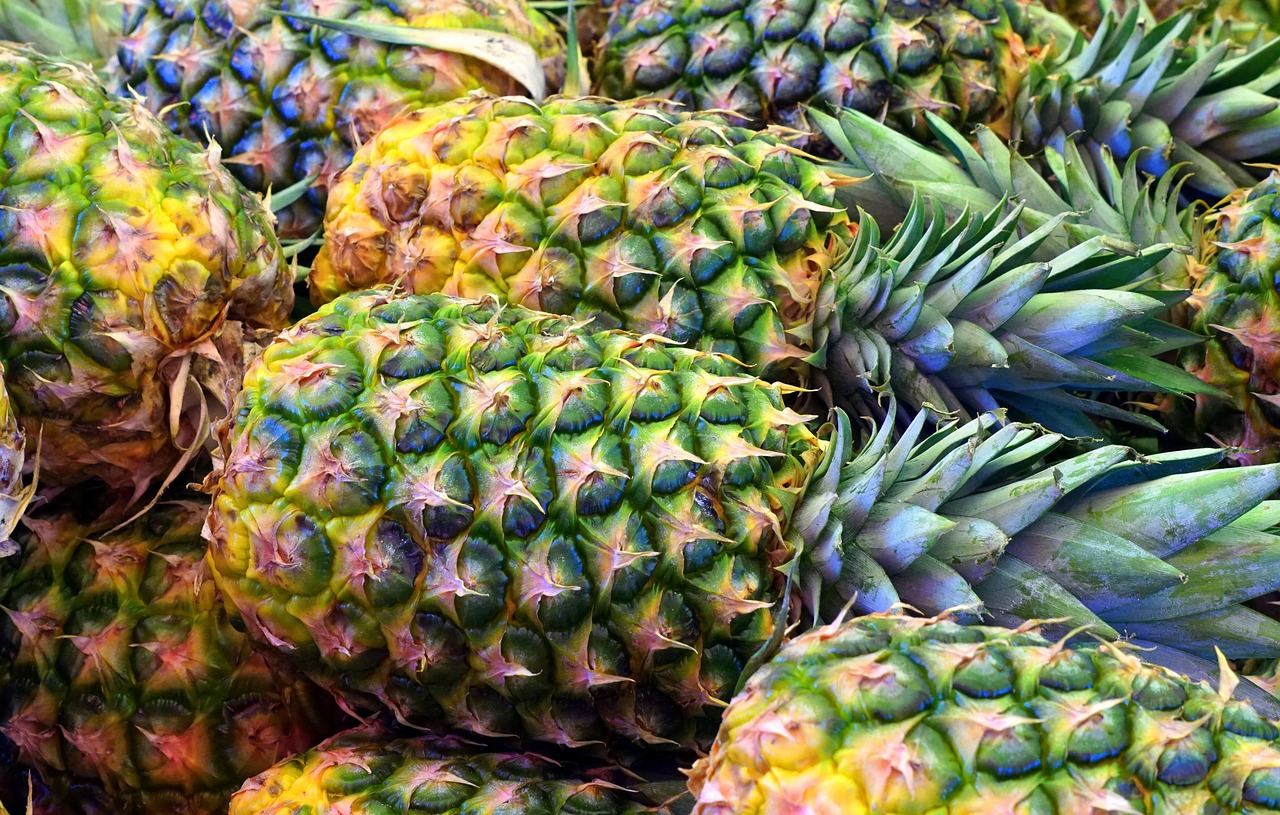What Kind of Fruit Is a Pineapple?
While it may be easy to bunch together fruits with a tangy flavor into just one group (citrus), pineapples are certainly not a member of the group of citrus fruits. While there may be several similarities, like being juicy and being a top-notch source of vitamin C, we cannot deny that pineapples are not grown on trees, and these fruits don’t even grow the way lemons and oranges do. The pineapple’s situation begs the question – what kind of fruit is the pineapple, anyway? Why does it look so different, too?
The pineapple fruit is more than one fruit if we look at things from a botanical perspective. The pineapple plant is a fleshy perineal that has hardened leaves that are generally durable and waxy. When the pineapple plant begins to mature and flower, multiple fruits emerge from the pineapple’s various flowers. These multiple fruits eventually fuse into a singular structure that we see as the pineapple. The plant suckers that are the most valuable for growers are in leaf axils located at the base of the mature pineapple plant. The suckers can be left alone to grow more flowers and fruits or propagate separately to form new plants. There are also different kinds of pineapple cultivars around the world.
Bromeliads are a quirky family of plants. The noble pineapple is related to the Spanish moss. If we trace the pineapple’s botanical lineage, the pineapple plant is also related to different air plants.
Pineapples are impressive, nutrition-wise, and it contains a large number of vital nutrients for optimum health. A single pineapple serving provides just 82.5 calories, 1.7 grams of fat, 1 gram of dietary protein, 21.6 grams of carbohydrates, 2.3 grams of fiber, over 100% RDA for vitamin C, 76% of the RDA for manganese, 7% folate requirements, etc. In short, eating pineapple regularly ensures that you’re getting a good percentage of the minimum required volume of essential nutrients for a strong and healthy body.
Another advantage of consuming pineapples regularly is this fruit is naturally packed with antioxidants, too. Antioxidants perform various tasks in the body – the most notable of which is protecting cells from prematurely dying. The premature death of cells is due to free radicals, which emerge as cells metabolize energy and other compounds. Free radicals need to be ‘mopped up’ by antioxidants to prevent them from damaging the cells. By reducing the incidence of premature cellular death, the body is healthier, and you will look younger and feel younger, too. The next great thing about antioxidants found in pineapples is they are bound, which means they stand a higher chance of surviving the harsh conditions found in the stomach and intestines. This translates to better performance in the body and a higher chance of benefitting from the nutrients. You can get phenolic acids and flavonoids by eating pineapples regularly, and in return, you will get longer-lasting health benefits, too.
Did you also know that pineapple is packed with bromelain, a digestive enzyme that can help break down protein? Bromelain can help reduce the stomach’s digestion time by breaking down protein blocks into smaller building blocks that the body can immediately use – amino acids. People who are suffering from poorly-performing pancreases can benefit from eating pineapples more. The pancreas is responsible for producing the digestive enzymes necessary for properly digesting food.
What Is Considered a Citrus Fruit?
There can be some level of confusion about what constitutes a citrus fruit and what doesn’t. If we were to go by the botanical definition of citrus fruits, they must come from the genus of trees belonging to the Rutaceae family. These trees include limes and lemons. Citrus fruits are native to many regions, including Australia, Melanesia, and various parts of Asia, including South Asia. This would explain why lemons and limes are common in South Asian cuisine, even though lemons are more often associated with Western culture and cuisine.
Some examples of true citrus are pomelos, tangerines, grapefruits, oranges, lemons, and limes. Fruit doesn’t have to come from the citrus genus of trees to have citric acid, the main proponent or acid that makes limes and lemons so tart. Many fruits also have naturally-occurring citric acid: tomatoes, cherries, cranberries, raspberries, strawberries, and pineapples all contain citric acids in varying amounts.
Do Pineapples Have Citric Acid?
Yes – a lot of it. If you look at how big pineapples get and how much a serving is, you will realize that we eat many citric acids when eating pineapples. It has been estimated that a single pineapple can contain as much as eight percent citric acid.
Citric acid is the number one source of flavor for this plant. It’s the same acid found in lemons and limes, which explains why they can be so tart in the first place. Until the 1900s, we thought that this acid could only be made or derived from lemons. Later on, researchers figured out that they can produce the same chemical type from a special black mold that produced citric acid as it fed on sugars.
However, keep in mind that the citric acid that is mass-produced for various applications is different from the naturally-occurring citric acid in lemons and fruits. On its own, citric acid doesn’t smell anything, but it is naturally tart, making a good food preservative, flavoring compound, etc.
Citric acid is even used in the manufacturing process for drugs, food, and beverages because it can stabilize a product and protect it from bacteria growth. Just think about it – a natural compound in lemons and pineapples can ensure that medication doesn’t go to waste by keeping bacteria away.

